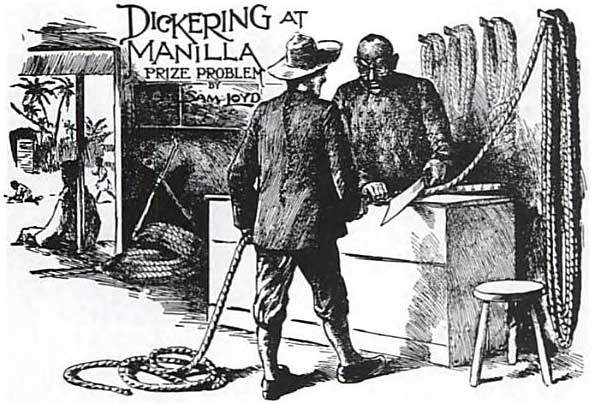Drilling in Manila

- 2251
- 357
- Frederick Cormier

Manila's hemp or rope trade, the most important industry of the Philippine Islands, is largely controlled by Chinese exporters who send these products to all parts of the world by boat.
Little merchants are Japanese that are characterized by a peculiar way to drive the business, especially their own business. The lack of established or fixed prices converts each transaction into a contest.
The next riddle shows what is the usual way to close a deal.
Omitting the vernacular tongue, we will say that a Chinese sailor enters a Sogas warehouse and asks:
- "Can you tell me where there is a respectable business that sells good rope '?"
The Japanese merchant, swallowing the implicit insult, says:
- "I only have the best, but the worst of the I have is surely better than the one you want".
- "Show me the best you have. Can serve me until I find another better. How much do you ask for thick rope?"
- "Seven dollars the one hundred feet long".
- "A too long rope and too much money. I never pay more than one dollar for a good rope, and this is rotten ".
- "Common rope," replies the merchant, pointing out the intact seal that guarantees length and quality. "If you have little money, take what needs the foot for two cents."
- "Cut twenty feet," says the sailor, and shows a five -dollar gold coin to prove that he can pay.
The supplier measures twenty feet with an exaggerated deployment of anxiety intended to show the sailor to concern to measure accurately. The sailor warns, however, that the measure of measuring, supposedly of a long yard, has three inches of less, since it has been cut in the 33 -inch brand. So when the rope is cut, it indicates the longest part and says:
- "I will take these eighty feet. No, you don't need to send them to me. I will bring them". Then it shows the false five dollar currency, which the merchant will change to the neighboring business. As soon as he receives the return, the sailor leaves with the rope.
The riddle consists in saying how much the supplier has lost, assuming to be claimed to replace the false coin, and that the rope truly costs two cents the foot. (Remember that 1 yard = 36 inches and 1 foot = 12 inches).
SolutionThe first 18 feet of rope that measured the supplier have 3 inches less for each yard, or a total of 1 foot and 1/2.
Nothing is lost in the last two feet, since the measure of measuring is only shorter at one end. Therefore, the supplier gives the sailor 81 feet and 1/2 of rope, which 2 cents makes a total of $ 1.63.
For this amount it receives $ 1.60 (80 feet at 2 cents), which is paid with a false five dollars. The supplier gives the sailor $ 3.40 back. This added to its loss of $ 1.63 of the rope, makes a total loss of $ 5.03.
The fact that a neighbor has changed the false money has nothing to do with their profits or losses.

